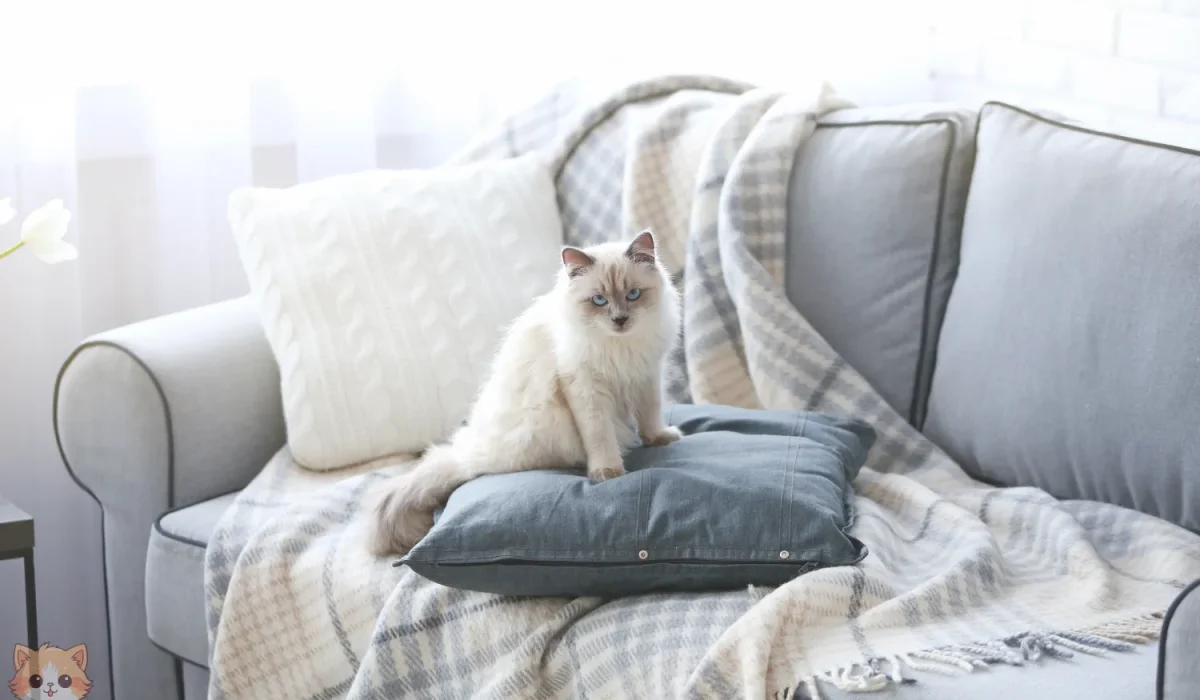Cats are naturally curious creatures, and keeping them off furniture can be challenging for many pet owners. Whether your cat enjoys scratching the couch, lounging on countertops, or leaving fur on chairs, there are effective ways to train them. This article will explain why cats scratch furniture, how to redirect their behavior, and what steps to take to protect your furniture.
Why Do Cats Scratch Furniture?
Natural Instincts Behind Scratching
Scratching is a normal behavior for cats. It helps them stretch their muscles, shed the outer layers of their claws, and mark their territory through scent glands in their paws. Even well-behaved cats will naturally seek out surfaces to scratch.
Why Do Cats Scratch the Floor or Carpet?
Cats sometimes scratch carpets and floors because the texture feels good under their claws. Suppose your cat is scratching low surfaces instead of vertical ones. In that case, they prefer a horizontal scratching surface or need more appropriate scratching posts.
The Right Way to Stop Your Cat from Scratching
Provide Scratching Posts
Find the Right Scratching Post Material
Cats have preferences for scratching materials. Some prefer sisal, while others like cardboard or carpeted surfaces. Offering different types of scratching posts will help you determine your cat’s favorite.
Put the Scratching Posts in the Right Places
Place scratching posts in areas your cat already enjoys scratching. This can be near the furniture they target or their usual resting spots. If your cat scratches the couch, put a scratching post next.
Teach Your Cat to Use Scratching Posts
Encourage your cat to use scratching posts by sprinkling catnip, dangling toys nearby, or using treats as a reward. If your cat starts scratching furniture, gently move them to the scratching post instead.
Modify Their Environment
Cover Your Cat’s Favorite Scratching Spots
Use furniture covers, double-sided tape, or plastic protectors on areas where your cat scratches. These materials make scratching less enjoyable and can encourage your cat to use their scratching post instead.
Create a Feline-Repellent Spray
You can make a homemade cat-repellent spray using diluted citrus or lavender essential oils. Many cats dislike these scents, which can help keep them away from furniture.
Remove the Pleasurable Aspect of Scratching
If your cat enjoys the texture of a particular surface, make it less appealing. Try using aluminum foil or sticky pads on the spots they tend to scratch.
Encourage Positive Behavior
Trim Your Cat’s Claws
Regularly trimming your cat’s claws reduces the damage they can do when they scratch. Use cat-friendly nail clippers and reward your cat afterward with a treat.
Use Cat Toys or Catnip to Redirect Scratching
Provide interactive toys and catnip to keep your cat engaged and reduce boredom. A bored cat is more likely to scratch furniture for entertainment.
Admonish Gently and Praise Positive Behavior
Never yell at your cat for scratching furniture. Instead, use a firm but gentle “no” and redirect them to a scratching post. When they use the scratching post, reward them with treats or affection.
Addressing Underlying Causes
Soothe Your Cat’s Anxiety
Some cats scratch furniture more when they are stressed or anxious. Provide a safe space, use pheromone diffusers, and keep their routine consistent to help them feel secure.
Give Your Cat Plenty of Enrichment Activities
A well-stimulated cat is less likely to scratch furniture. Provide climbing shelves, scratching posts, window perches, and playtime to entertain your cat.
Work With a Cat Behavior Specialist
Consider consulting a cat behaviorist if your cat continues scratching furniture despite your efforts. They can provide tailored solutions for your cat’s specific needs.
What Not to Do When Your Cat Scratches Furniture
Why Declawing is Not the Answer
Declawing is a painful procedure that removes part of a cat’s toes. It can lead to long-term pain, behavioral problems, and difficulty walking. Instead, focus on training and providing appropriate scratching alternatives.
Common Mistakes: Punishing or Forcing Your Cat
Never punish your cat by hitting them, spraying them with water, or yelling. These methods create fear and can make behavior worse. Instead, focus on redirection and positive reinforcement.
Frequently Asked Questions
How can I train my cat to stop scratching furniture?
Provide scratching posts, reward your cat when they use them, and make furniture less appealing by using covers or deterrents like double-sided tape.
What are the best materials for scratching posts?
Sisal, cardboard, and carpet-covered scratching posts are popular choices. Try different textures to see which your cat prefers.
How can I keep my cat away from my couch?
Use furniture protectors and cat-repellent sprays, and place scratching posts near the couch to give them an alternative surface to scratch.
Conclusion:
With patience and the right approach, you can train your cat to stop scratching furniture while keeping them happy and healthy. Providing appropriate scratching alternatives and using positive reinforcement will lead to long-term success.

